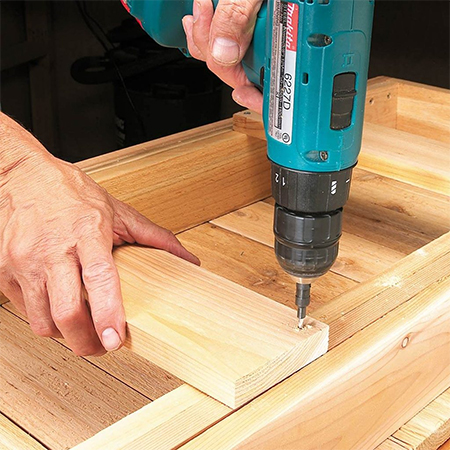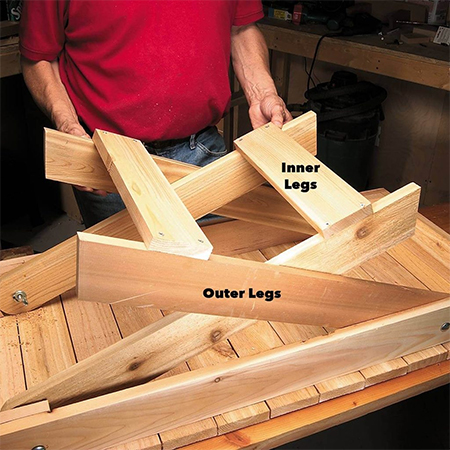DIY Fold-Away Braai Table
Before spring arrives and it is time to head outdoors, grab your tools to make this practical fold-up braai table.
12/07/2022
This practical, handy braai table is portable enough to set up anywhere and easy enough to make over a weekend. All the material needed to make this fold-up braai table can be sourced at any Builders store, countrywide.
The legs of the table tuck under the top for easy storage, and a handle attached to the front makes it portable. The table is made from 90 x 19mm Meranti - you can also use pine - sealed with a quality exterior sealer.
YOU WILL NEED:
12 of A - Top slat - 480 x 90 x 19mm
2 of B - Long side piece - 1060 x 90 x 19mm
2 of C - Short side piece - 400 x 90 x 19mm
4 of D - Leg - 730 x 90 x 19mm
2 of E - Leg stretchers - 400 x 90 x 19mm
2 of F - Leg spacers - 200 x 90 x 19mm
4 of G - Leg stop blocks - 110 x 90 x 19mm
Wood screws
Cup head bolts M10 x 60, washers and wing nuts
TOOLS:
Drill and assorted bits
Jigsaw
Screwdriver
Clamps
Tape measure and pencil
Safety gear
HERE'S HOW:
Step 1
Use a jigsaw or handsaw and a square to cut the boards for the top and the frame. Assemble the frame, drilling two holes at the ends of the longer frame boards and adding a countersink hole for the screwheads to nestle into.
Step 2
Clamp the leg boards together (rough side in) and cut them at the same time to ensure identical pieces. Before unclamping, drill the 10mm bolt hole in the upper end.
Step 3
Place the slats top-side up on a flat surface, leaving 2mm gaps between each. Centre the supporting frame on top, leaving a 20mm overhang on all sides. Trace the frame shape on the slats with a pencil to make it easier to drill holes.
Step 4
Remove the frame and drill two holes on each top board end with a countersink bit, using the traced lines as a guide. Screw the slats to the frame using a nail as a spacer between the boards. End slats should overhang by 20mm to match the side overhang.
Step 5
Flip the tabletop upside down and screw a pair of angled leg stop blocks in one end of the frame. Butt rounded ends of the legs against the blocks. Drill through the frame and bolt on legs with M10 x 60 cup head bolts, washers and wing nuts.
Step 6
Screw spacer blocks in the other end of the frame to allow the other pair of legs to nest inside the first. Drill and bolt on the leg stop blocks and the second pair of legs using the longer M10 x 90 cup head bolts.
Step 7
With the legs flat on the underside of the table, measure the length of the stretchers. Cut, drill and fasten them across each pair of legs.
Step 8
Test the fit of the legs by pulling the legs up from the frame. Lift the wider spaced pair first so the second can be raised without catching on the stretcher of the first pair. If the legs bind and scrape, sand the sides for a smoother fit.
Finishing
- Sand the table with 120-grit sandpaper. Slightly round the top edges of the slats. Brush away any dust and apply a finish. We used three coats of a Woodoc 50 to finish off the table and provide sufficient protection for outdoor use.
- To use the table, simply pull out the legs, tighten the wing nuts and get ready for a braai!
- Add a handle to make it easy to carry, and screw on some hooks to hang barbecue tools.
family handyman magazine


.jpg)
.jpg)
.jpg)
.jpg)

